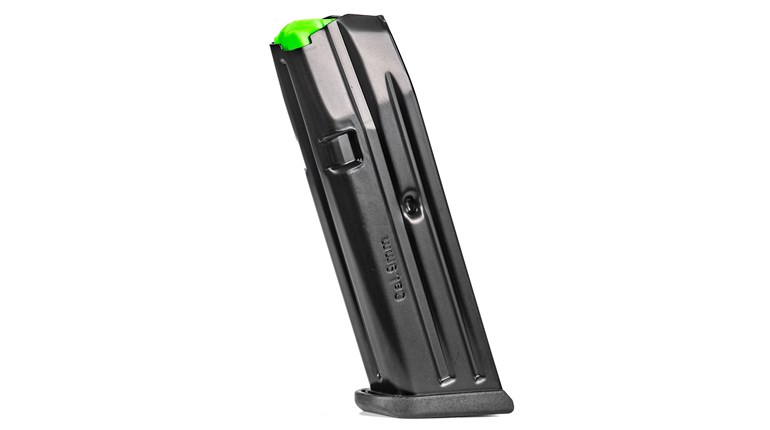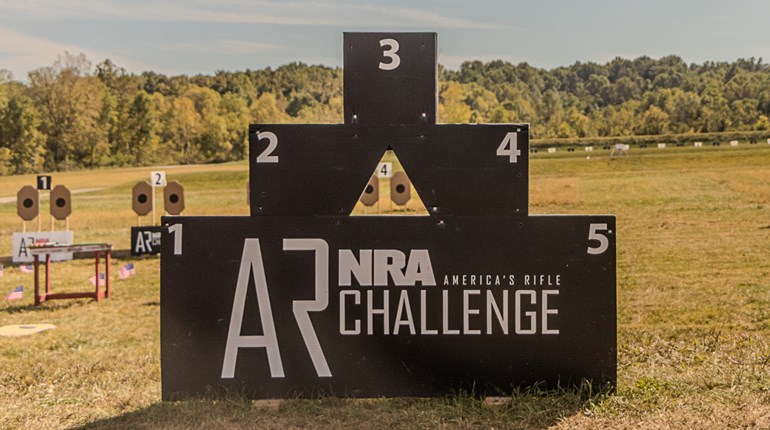
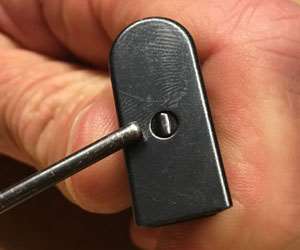
It strikes us as odd how often things seem to go in peculiar cycles. And this doesn’t seem unique—lots of pals and family report these déjà vu-ish episodes too. A strange one started with our recent trip to Gunsite Academy (here, here and here) and is continuing in our recent range missions. It also has decided Carry Life implications: If your carry wherewithal is an auto-loader/semi-automatic, it has a magazine. Since correct, continued functioning of the defensive firearm depends on that magazine, are there considerations to keeping mags at their best, and avoiding the mayhem we’re seeing so much?
The answer is, emphatically, yes.
Perhaps the most slap-upside-the-head obvious consideration is to start with good magazines in the first place. “Duh,” you assert? Well, we agree, but long experience (and frequent, extremely artistic expletives from nearby shooters) convince us that the cost is so gut-wrenching that unwise workarounds in the aftermarket are still commonplace. And that’s usually a bad idea.Perhaps the most slap-upside-the-head obvious consideration is to start with good magazines in the first place.
Ergo, there’s little choice but to brace yourself for the financial blow. We can think of a top-tier, yet very reasonably priced, pistol—reviewed here and in America’s 1st Freedom magazine—that requires nearly a third again of the acquisition cost just to buy enough mags to compete in Steel Challenge.
An aside might help to put this in perspective, though it won’t save any dough. Understand that few manufacturers make their own magazines. By the time they reach you, those mags have already been “sold” twice—by the actual manufacturer to the firearms maker, and subsequently to you. No Wharton MBA is needed to work out why they get pricey.
The hope, of course, is that they are worth it. And from most companies, they absolutely are. But if it seems like we’re back where we started, we concur. Still, it’s useful to know why rancorous accusations of being “ripped off” for mags are a little wide of the mark.
Once you have them in your “fat little claw” (with apologies to Shelley Berman, here at 2:10, though the whole bit is hilarious), however, there’s an awful lot you can do to keep them running smoothly and protect that substantial investment.
Start with knowing how to disassemble, clean and reassemble those beauties without damage. Old hands are generally practiced at this and are a good source of tips/tricks, though modern mags from many sources have the same key starting point to their disassembly regimen. Most often, pressing a button or tab inward through a hole in the external base plate “unlocks” the assembly, and the five main components can now be separated—follower (which sits atop the spring and under the cartridges), spring, internal base/lock plate, mag tube (or body) and the external base plate.Start with knowing how to disassemble, clean and reassemble those beauties without damage.
Being careful to control the internal button/lock plate and spring so you don’t launch them into your face/eyes or across the room, holding that button down will allow you to slowly slide the base forward and off the mag tube. We’d recommend that you practice this a little in a controlled space; you particularly don’t want that a launch to occur outside where all components may not be recoverable. Note that this is a real bear on some mags, particularly the first time. Glock magazines, for instance, are generally tough early on; good news here is that they need disassembly far less frequently than most. Others are a piece of cake once you know how—most striker-fired guns have mags in this category, as well as many 1911s (and wide-body 2011s, too).
How often should magazine maintenance be done? This depends largely on the firearm. Some guns and their magazines are famously tolerant of schmutz almost anywhere. Double-stack, top-tuned Browning-pattern (1911/2011s and similar) mags are famously intolerant: Most Open/Unlimited Division shooters clean those magazines every time they’re grounded. If your shooting is predominantly indoors, or outside but over a maintained surface, it may be months before this is absolutely necessary. Here, however, is where it gets to be a big Carry Life deal—reputation or conditions won’t matter if a dirty magazine causes a stoppage.
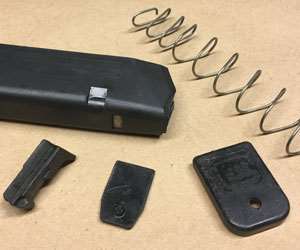
“Stickiness” or round bind-up is an easy clue you’re overdue, but any feeding problems may be a subtler hint that it’s time for magazine maintenance. This latter case is why your mags should have unique, distinguishing marks, too: That way, you can tell if problematic performance is associated with an individual magazine or more generally with the firearm or ammunition.
In no particular order, we look for five types of problems. The first is foreign material of any sort, inside and out. If your mags get dropped on natural surfaces during the course of training or competition, this can be almost anything. Micro-grit of various types—dust, sand, even smallish gravel will get inside sooner or later—is best attacked with a brush designed for the purpose (a favorite here at Brownells). Wet conditions, of course, will compound the gunk problems seriously, and you’ll also want to have a way to dry magazine internals if at all practical. But—no kidding—we’ve found spent primers, shreds of targets and pasters, and stuff we couldn’t actually identify inside mags on rare occasions.“Stickiness” or round bind-up is an easy clue you’re overdue, but any feeding problems may be a subtler hint that it’s time for magazine maintenance.
Though the vast majority of detritus will be as we’ve already described, be alert for anything that falls out of the magazine upon disassembly. This is crucial because other stuff can work its way inside—like small broken pieces of the magazine or your gun (yes, there are stories here). While you may have escaped a malfunction this time around, you might not be as fortunate the next time you run that firearm. That might be no biggy on the range, but in terms of self-defense, it makes us shudder. This disaster can often be avoided by a very simple expedient: While applying very gentle pressure to the follower of an assembled mag, shake it and listen. Nothing should rattle.
Next, examine the spring. This process is helped by having more than one magazine, and performing the maintenance on all at the same time so comparison is possible. What you’re looking for here is a magazine spring that is noticeably shorter than its fellows—more than half an inch is our “start to worry” rule of thumb. This is done after any initial wear-in period, mind you, as some shortening is normal. It’s a second collapse that signals end-of-life, and it can happen in a couple of ways, but all end badly. Replace it, period. (We keep replacements on hand, in fact. Look here or here; these are often better than the originals.)
The same holds true for noticeably mushy springs (a highly technical gunsmithing term for your edification). One caution at this point: We can’t recommend mixing magazine components during this process. Yeah, yeah, yeah, we know about Henry Ford, too—interchangeable parts and all that jazz—but if something is working, don’t chance it. Keep working mag parts together whenever you can.
Followers, er, follow, and are somewhat trickier to assess. Different magazines for various pistols exhibit a range of “wobble” in our experience (the forward-and-backwards, side-to-side movement of the follower as they ride in the mag body) so it can be hard to tell how much is normal, how much indicates normal wear, and what should be replaced. In the end, we’ve replaced very few in the course of using several hundred mags in dozens of firearms. They’re almost all polymer these days, and extremely tough. 1911s still have lots of metal followers, but these just can’t wobble much at all because of their narrow profiles and modern “anti-tilt” design.
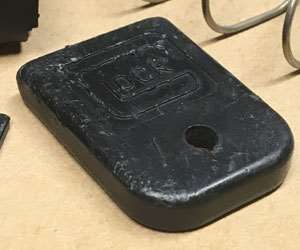
Still, watch them: We have seen smaller parts of the moldings give way on the underside and compromise the mating of the spring with the follower. Metal single-stackers have given out, too. Such failures are easy to see by comparison (and often revealed in the “rattle test” prior to disassembly), though some variations are designed-in changes, not breakage, and close inspection is needed to discern which is which. It’s one more reason to have multiple samples for immediate, direct comparison, and to keep a few spares around.
The fourth inspection is generally far less technical—those internal and external lock/base plates. While we’ve seen some lock tabs get pretty dog-eared in long use, they still seem to work just fine. As long as the magazine disassembles and reassembles as expected, these are probably OK. But if dropping to a hard surface causes a minor explosion, this would be a clue. Added caution applies if you have extended mag bases. To keep magazines that use these running well, springs are often of higher poundage ratings. These put more stress on base plates, or the “covers” they become. Watch them carefully for cracks. Failure here is a “speed unload”—never desirable (but dang funny on a one-way range). Spares are also the answer here.We don’t lube the inside of magazines at all. It just seems to turn them into crud magnets.
There’s a fifth inspection, as we said, but we’ll save it for Magazine Mayhem, Part II. It has to do (unsurprisingly) with the mag body itself, and most importantly to the feed lips—the very top of the magazine, and the part that crucially controls the movement of rounds from the magazine to the chamber/barrel.
Here’s a final thought. We don’t lube the inside of magazines at all. It just seems to turn them into crud magnets. Protect the metal, sure: Wipe it down, but then wipe all excess away. We concede this is a pain with interior surfaces, and the coils of those springs, but do it all the same. Even the slightest over-lubrication begets more frequent disassembly, which begets wear.
This brings us to a case in point, and why we resurrected our Gunsite trip. One of our loaner magazines was a vintage—to say the least—Pachmayr full-length seven-rounder. The round count alone hints at the age of the magazine: As far as we can determine, these mags haven’t been manufactured for somewhere between 15 and 20 years, yet this one ran without a hitch all week long.
So take good care of those magazines, and they’ll take good care of you.
Now Carry on.











